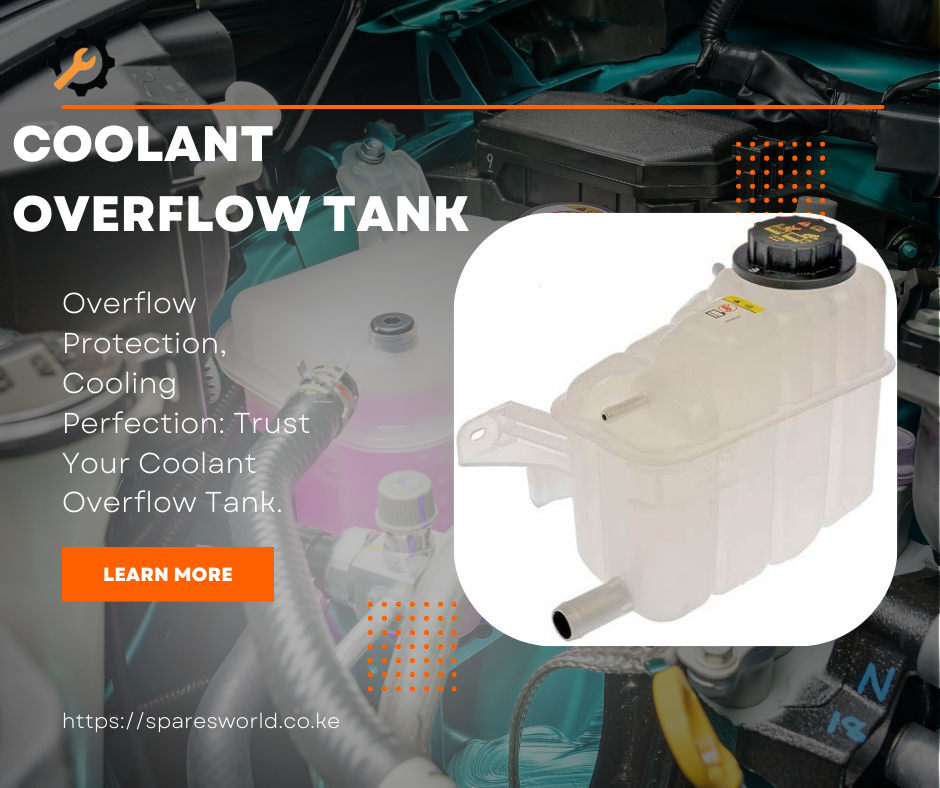The Benefits of a Properly Functioning Coolant Overflow Tank

Discover how a well-maintained coolant overflow tank can extend the life of your engine and keep your vehicle running smoothly.
Understanding the Role of the Coolant Overflow Tank
The coolant overflow tank, often known as the coolant reservoir, is a crucial component of your vehicle's cooling system. Its primary function is to manage the expansion and contraction of the coolant as it heats and cools. When the engine is operating and the coolant heats up, it expands and needs somewhere to go. The overflow tank provides a safe place for this excess coolant to go, preventing it from spilling out and causing potential damage or hazards.
Additionally, as the engine cools down, the coolant contracts and needs to be drawn back from the overflow tank into the radiator. This process helps maintain the correct level of coolant in the system, ensuring optimal performance and preventing the engine from overheating.
Preventing Engine Overheating: How the Overflow Tank Helps
One of the most critical functions of the coolant overflow tank is to help prevent engine overheating. An overheated engine can lead to severe damage, including warped components and even complete engine failure. By managing the expansion and contraction of the coolant, the overflow tank ensures that the cooling system consistently has the right amount of coolant to operate efficiently.
Without a properly functioning overflow tank, the coolant levels could drop too low, especially during extended drives or in hot weather conditions. This could cause the engine to overheat, resulting in costly repairs and potentially leaving you stranded on the side of the road.
Enhancing Engine Longevity Through Proper Coolant Levels
Maintaining proper coolant levels is essential for enhancing the longevity of your engine. The coolant not only helps to regulate the engine temperature but also prevents corrosion and lubricates various engine components. A well-maintained coolant overflow tank ensures that the coolant levels remain consistent, contributing to the overall health of the engine.
Regularly checking and maintaining the coolant overflow tank can prevent issues such as coolant leaks and contamination, which can lead to engine damage over time. By ensuring that the tank is in good condition and functioning correctly, you can help extend the lifespan of your vehicle's engine.
Signs of Coolant Overflow Tank Issues and How to Address Them
It's crucial to be aware of the signs that your coolant overflow tank may be experiencing issues. Common indicators include visible coolant leaks, an overheating engine, or a low coolant warning light on your dashboard. Additionally, if you notice the coolant level in the overflow tank dropping frequently or the coolant appearing discolored, it may indicate a problem.
To address these issues, start by inspecting the tank for any visible cracks or damage. Ensure that all connections are secure and that the coolant level is within the recommended range. If you identify any issues, it's essential to address them promptly to prevent further damage to your engine.
Maintaining Your Coolant Overflow Tank: Best Practices
Proper maintenance of your coolant overflow tank is vital for ensuring the longevity and performance of your vehicle. Regularly check the coolant level and top it off as needed with the appropriate type of coolant recommended by your vehicle manufacturer. Inspect the tank and its connections for any signs of wear or damage, and replace the tank if necessary.
Additionally, it's a good idea to have your entire cooling system inspected by a professional during routine vehicle maintenance. This can help identify any potential issues early and ensure that your coolant overflow tank and the rest of the cooling system are functioning correctly. By following these best practices, you can keep your engine running smoothly and extend the life of your vehicle.

 Loading..
Loading..